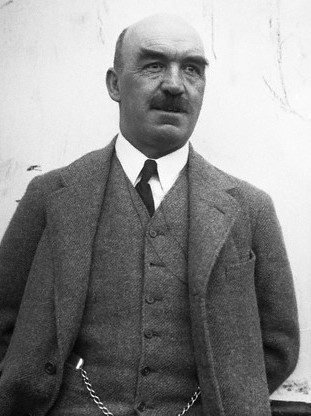"The chief object of every golf architect or greenkeeper worth his salt is to imitate the beauties of nature so closely as to make his work indistinguishable from nature itself."
Alister MacKenzie

OUR INSPIRATION
Dr. Alister MacKenzie is revered as one of the greatest golf course architects ever to put pencil to paper. But like many course designers he had a roundabout way of coming to the game. Originally trained as a doctor he never really earned a living in medicine. In World War I he served in the military with a specialization in camouflage. He carried that skill into course design and some of his creations are listed as the greatest, and most timeless courses ever built. MacKenzie’s Cypress Point, Royal Melbourne, Pasatiempo and his most famous design, Augusta National, rank as the standard to which other courses are measured. Today’s course architects continue to use MacKenzie’s design features and rules in designing their courses.
"One of the reasons why I, 'a medical man' decided to give up medicine was a firm conviction of the extraordinary influence on health of pleasurable excitement, especially when combined with fresh air and exercise. How frequently have I, with great difficulty, persuaded patients who were never off my doorsteps to take up golf, and how rarely, if ever, I have seen them in my consulting room again. - Alister MacKenzie
Here are MacKenzie’s essential features of the ideal golf course:
- The course should be arranged in
two loops of nine holes.
- There should be a large
proportion of good two-shot holes, two or three drive-and-pitch holes, and at
least four one-shot holes.
- There should be little walking
between greens and tees and the course should be arranged so that in the first
instance there is always a slight walk forwards from the green to the next tee;
then the holes are sufficiently elastic to be lengthened in the future if
necessary.
- The greens and fairways should be
sufficiently undulating, but there should be no hill climbing.
- Every hole should have a
different character.
- There should be a minimum of
blindness for the approach shots.
- The course should have beautiful
surroundings and all the artificial features should have so natural an
appearance that a stranger is unable to distinguish them from nature itself.
- There should be a sufficient
number of heroic carries from the tee but the course should be arranged so that
the weaker player with the loss of a stroke or portion of a stroke shall always
have an alternative route open to him.
- There should be infinite variety
in the strokes required to play the various holes…interesting brassy shots
(fairway woods), iron shots, pitch shots and run up shots.
- There should be a complete
absence of the annoyance and irritation caused by the necessity of searching
for lost balls.
- The course should be so
interesting that even the plus man (scratch) is constantly stimulated to
improve his game in attempting shots he has hitherto been unable to play.
- The course should be so arranged
so that the long handicap player, or even the absolute beginner, should be able
to enjoy his round in spite of the fact that he is piling up a big score.
- The course should be equally good
during winter and summer, the texture of the greens and fairways should be
perfect and the approaches should have the same consistency as the greens.
"I have not the slightest hesitation in saying that beauty means a great deal on a golf course; even the man who emphatically states that he does not care a hang for beauty is subconsciously influenced by his surroundings. A beautiful hole appeals not only to the short but also to the long handicap player, and there are few first rate holes which are not at the same time, either in the grandeur of their undulations and hazards, or the character of their surrounds, things of beauty in themselves." Dr. Alister MacKenzie
